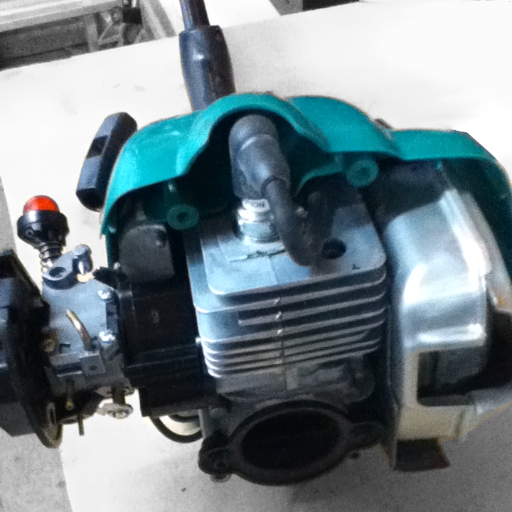I got my first string trimmer a couple of years ago, but immediately ran into trouble the next summer because I didn’t know how to winterize my gas powered tools. In fact, I just left it outside under the deck, and after a cold winter, as anyone who knows anything about engines would know, it didn’t start. I got some help from a friend, and he thought it was a problem with bad gas, which is a common problem with leaving gas in extreme weather.
The first thing we tested was the spark plug. I actually broke it when pulling it out, so there was no question about whether or not it needed replacing. I bought a new one, and still it wasn’t working. At this point we should have tested again for spark, but we didn’t think that gas was getting in there. This is where I learned a little trick to get small engines started. We took an eyedropper full of gas and squirted it into the cylinder beneath the spark-plug, carefully re-threaded the spark-plug (so as to not break it), and gave it a few pulls. Now, although this didn’t work in this case due to other problems that I still need to explain, this trick has come in handy in other circumstances.
So, what was the problem? Well, I set about testing for a spark by touching the metal of the spark-plug to metal on the engine (while the spark plug was still attached to the cable coming from the ignition coil), and pulling the starting cable. In my case there was no spark, but you should see a blue spark jumping across the two contacts of the spark-plug. Of course, yours could be dirty, but mine was brand new. Here is a YouTube video explaining how you can do this. Do take caution, because the spark produced could lead to death, so don’t be touching the metal, and keep it away from gas while testing it!

I also set about testing the kill switch just in case it was constantly on. I tested it by simply unplugging it and then trying to start the string trimmer again. This also didn’t produce the intended results. In my mind, there could only be one more reason there was no spark and that was the ignition coil. I looked it up online how to test it with a multi meter, and sure enough it was broken. Ignition coils can be expensive, but I found a replacement for a reasonable price. After some clean up, and installing the new ignition coil, it now runs great.
I guess I learned my lesson about winterizing my gas tools, but that shouldn’t break the ignition coil right? Well, there are two things that greatly contribute to ignition coil breakdown. One is excessive shaking, but my string trimmer runs really nice. The other thing is too much heat. Now, that summer, before it broke, I ran it like a horse, always at full power. (It was my first time using one.) I actually had black smoke come out of the muffler on several occasions (I think that the black was from burning oil). Anyways, I think that the ignition coil was broken before I stored it away for the winter. My improper storage made it harder to identify the problem, but I took some precautions to reduce the chance of it failing again. First, I turned down the idle speed (as it was pretty high). Second, I put some plastic washers between the ignition coil and the engine housing to reduce the amount of heat that it can absorb at once. And finally, I also oiled the crankshaft with some 2-cycle oil to reduce the head produced. Of course, the easiest way to prevent an overheat is to just run it slower, which I have been doing, but when I need it, it still has great power. Anyways, learn from my mistakes, and if you have a similar problem, maybe this will help you identify it.